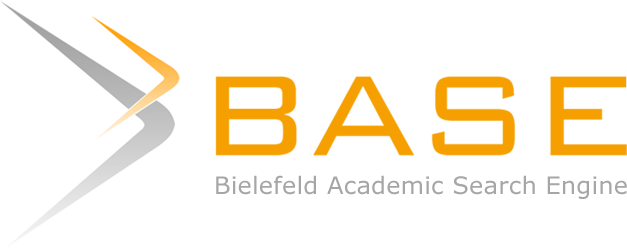Pengembangan Media Pembelajaran Kotak Komponen Ekosistem (KOKOSIS) untuk Sekolah Dasar
DOI:
https://doi.org/10.51574/judikdas.v1i1.184Keywords:
Development, Instructional Media, Learning Media Ecosystem Component Box (KOKOSIS)Abstract
The objectives of this research are (1) to find out the development of KOKOSIS learning media (Ecosystem Component Box) on the theme 8 sub-theme 1 grade V at UPTD SDN Panyaksagan Klampis; (2) to know the validity, effectiveness, and attractiveness of KOKOSIS learning media (Ecosystem Component Box) at the theme 8 sub-theme 1 grade V at UPTD SDN Panyaksagan Klampis. This development research uses the Borg and Gall development model. Based on the results of the research conducted, the results showed that the average percentage of KOKOSIS learning media’s validity was 89%, hence it can be categorized as very valid. The effectiveness of the KOKOSIS learning media which is being measured from the teacher observations is 100%, hence can be categorized as very active. Meanwhile, the result of the observation on the students’ activity is 98% and can also be categorized as very active. The percentage of classical completeness is 91%, hence it can be categorized as completed. In conclusion, the KOKOSIS learning media can be effectively used in learning process. Furthermore, the media’s attractiveness which is measured by the percentage of student questionnaire response shows that 97% of the students claimed it as attractive, thus it can be categorized as very interesting. Thus, it can be concluded that the KOKOSIS learning media is valid, effective and interesting to be applied in the Theme 8 Sub-theme 1 of ecosystem components topic for V grader at UPTD SDN Panyaksagan Klampis.
References
Aisyah, Siti. (2014). Pembelajaran Terpadu di SD. Tanggerang Selatan: Universitas Terbuka.
Akbar, Sa’dun. (2013). Instrumen Perangkat Pembelajaran. Bandung: PT Remaja Rosdakarya.
Arsyad, Azhar. (2016). Media Pembelajaran. Jakarta: PT Rajagrafindo Persada.
Asiera, A.D., (2017). Pengembangan Media Pembelajaran Papan Rantai Makanan Subtema 3 Memelihara Ekosistem Pada Materi Pokok Rantai Makanan Pada Suatu Ekosistem Untuk Siswa Kelas V Sekolah Dasar. Skripsi. Fakultas Keguruan dan Ilmu Pendidikan. Pendidikan Guru Sekolah Dasar, Universitas Sanata Dharma, Yogyakarta.
Fitriani, N. (2017). Pengembangan Media Pembelajaran Maket Ekosistem Untuk Kelas V SD Yamastho Surabaya. Skripsi. Fakultas Keguruan dan ILmu Pendidikan, Malang.
Mujtahidin. (2014). Teori Belajar dan Pembelajaran. Surabaya: CV Salsabila Putra Pratama.
Pane, A., & Dasopang, M. D. (2017). BELAJAR DAN PEMBELAJARAN. FITRAH: Jurnal Kajian Ilmu-Ilmu Keislaman, 3(2), 333–352. https://doi.org/10.24952/FITRAH.V3I2.945.
Prabowo, D.M., (2017). Pengembangan Media Diorama 3 Dimensi Dalam Pembelajaran IPA Materi Ekosistem kelas V SDN Kalibanteng Kidul 02 Semarang. Skripsi. Fakultas Ilmu Pendidikan. Pendidikan Guru Sekolah Dasar, Universitas Negeri Semarang, Semarang.
Rahayu, E dkk., (2018). Pemahaman Tentang Lingkungan Berkelanjutan. Jurnal. Departemen Arsitektur, Fakultas Teknik, Universitas Diponegoro, Semarang.
Santoso, A.B., (2020). Pengembangan Media Pembelajaran Diorama “SIBANSOR” (Simulasi Banjir dan Tanah Longsor) Tema 3 Subtema 3 Pembelajaran 2 UPTD SDN Jaddih 2 Socah. Skripsi. Fakultas Ilmu Pendidikan. Pendidikan Guru Sekolah Dasar, Universitas Trunojoyo Madura, Madura.
Slameto. (2015). Belajar dan Faktor-faktor yang Mempengaruhi. Jakarta: Rineka Cipta.
Sudjana & Rivai. (2010). Media Pengajaran. Bandung: Sinar Baru Algesindo.
Sugiyono. 2015. Metode Penelitian Pendidikan Pendekatan Kualitatif, Kuantitatif, dan R&D. Bandung: Alfabeta.
Trianto. (2009). Mendesain Model Pembelajaran Inovatif-Progresif, Konsep, Lamdasan, dan Implementasinya pada Kurikulum Tingkat Satuan Pendidikan (KTSP). Jakarta: PT Kencana Prenadamedia Group Jurnal.
Wiratman, A., Mustaji, M., & Widodo, W. (2019). The effect of activity sheet based on outdoor learning on student’s science process skills. Journal of Physics: Conference Series, 1157(2), 022007. https://doi.org/10.1088/1742-6596/1157/2/022007
Yahya, F.R., (2019). Pengembangan Media Pembelajaran Tiga Dimensi Tema Ekosistem Subtema Komponen Ekosistem Mata Pelajaran IPA Kelas V MI Tarbiyatul Huda Malang. Skripsi. Fakultas Ilmu Tarbiyah dan Keguruan. Pendidikan Guru Madrasah Ibtidaiyah, Universitas Islam Negeri Maulana Malik Ibrahim Malang, Malang.
Downloads
Published
How to Cite
Issue
Section
License
By submitting an article manuscript, the author agrees to all policies set forth by the journal and publisher.
The author declares that:
- They have been authorized by their co-authors to enter into this agreement.
- The work described has not been officially published before, except in the form of an abstract or as part of a lecture, review, thesis, or preprint journal.
- The work is not currently under consideration for publication elsewhere.
- Its publication has been approved by all authors and by the responsible authorities—either implicitly or explicitly—of the institution where the work was conducted.
- They have obtained the right to reproduce any material that has been published or copyrighted elsewhere.
- They agree to the following license and copyright agreement.
License and Copyright Agreement
Authors publishing in Jurnal Ilmu Pendidikan Dasar Indonesia agree to the following terms:
- Authors retain copyright and grant the journal the right of first publication with the work simultaneously licensed under a Creative Commons Attribution-ShareAlike (CC BY-SA 4.0) License, which allows others to share the work with acknowledgment of the authorship and initial publication in this journal.
- Authors may enter into additional non-exclusive contractual agreements for the distribution of the journal's published version of the work (e.g., posting it to an institutional repository or publishing it in a book), with acknowledgment of its initial publication in this journal.
- Authors are permitted and encouraged to post their work online (e.g., in institutional repositories or on their websites) before and during the submission process, as this can lead to productive exchanges, as well as earlier and increased citation of the published work.



1.png)
3.png)




